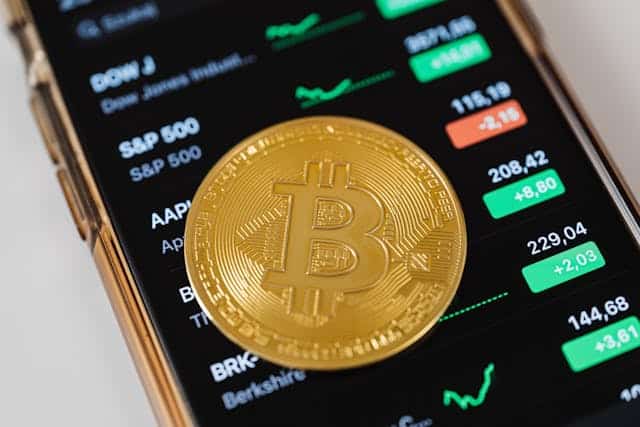The blockchain revolution—reshaping our approach to data, transactions, and digital ownership—faces a pressing challenge as technology advances: achieving seamless communication between different blockchain networks. This is precisely what blockchain interoperability addresses. Blockchain interoperability, in essence, enables diverse blockchain systems—each characterized by its distinctive protocols and architecture—to seamlessly exchange information, assets, and data. This harmonization is crucial for unleashing blockchain technology’s full potential and fostering an interconnected digital ecosystem.
Blockchain interoperability’s significance transcends mere technical ease; it unlocks novel investment prospects within the blockchain ecosystem. With industry expansion, investors break free from the confines of solitary networks or stand-alone projects. Interconnected markets emerge through interoperability, facilitating effortless asset exchange and nurturing cross-platform cooperation. Interconnectedness boosts liquidity, streamlines complex financial operations, and expands investment opportunities, from decentralized finance (DeFi) protocols to cross-chain non-fungible tokens (NFTs). For forward-thinking investors, mastering a unified blockchain landscape is an indispensable advantage.
Understanding Blockchain Interoperability
Blockchain interoperability is the seamless communication, data sharing, and asset transferring between distinct blockchain networks. Each separate blockchain typically functions as an isolated entity—complete with unique protocols, consensus mechanisms, and native tokens. This independence fosters specialization; however, it simultaneously creates obstacles that constrain the full potential of decentralized technologies. Interoperability aims to bridge these gaps, facilitating a more unified and interconnected blockchain ecosystem.
Key Technologies Enabling Interoperability
Cross-Chain Bridges
Cross-chain bridges serve as the primary facilitators of interoperability between blockchains. They function as connectors that permit users to transfer assets and data across disparate networks—for example, moving tokens from Ethereum to Binance Smart Chain—thereby providing interaction with applications on both platforms. This technology frequently utilizes smart contracts and cryptographic proofs—key components that cement the security and validity of cross-chain transactions.
Interoperable Protocols
Protocols like the Inter-Blockchain Communication (IBC) Protocol epitomize a standardized approach to blockchain interoperability. This type of blockchain protocol offers a structure that enables blockchains to interact directly, thus facilitating secure, efficient data and asset transfers. When blockchains adopt interoperable protocols, they foster a cohesive ecosystem in which assets and services circulate without barriers, propelling innovation throughout the industry.
Atomic Swaps
Atomic swaps enable two parties to directly trade assets from distinct blockchains without a centralized exchange’s involvement. Smart contracts secure and lock these assets on either side of the transaction until all predetermined conditions are satisfied, thus ensuring a secure and equitable completion of the swap.
Current Investment Landscape in Blockchain
The blockchain ecosystem has swiftly transformed into a vibrant investment hub, providing diverse opportunities for both institutional and retail investors alike. Key among these avenues is cryptocurrencies—the cornerstone asset class of blockchain technology—where Bitcoin and Ethereum stand out due to their prospects for substantial returns and status as digital value repositories. Thousands of altcoins have emerged beyond these market leaders, targeting specific use cases such as privacy, scalability, or decentralized applications. Cryptocurrency volatility offers opportunities and risks alike, making them an attractive yet high-stakes option for investors in pursuit of exponential growth.
DeFi represents another transformative domain in blockchain investment. DeFi platforms endeavor to replicate conventional financial services—including lending, borrowing, and trading—upon decentralized blockchain infrastructures, thereby obviating the necessity for intermediaries. Protocols such as Aave, Uniswap, and MakerDAO stand at the forefront of this arena; they afford investors prospects for yield earnings, liquidity provision and participation in decentralized exchanges.
NFTs have ushered in a novel facet of blockchain investments, especially for enthusiasts of digital art, collectibles, and intellectual property. These tokens signify distinct, non-divisible digital assets authenticated and exchanged on platforms like Ethereum. Notable transactions—including Beeple’s $69 million digital artwork sale—spotlight the rich prospects within this realm. NFTs are transcending art to permeate industries such as gaming, music, and real estate, presenting investors with a spectrum of opportunities.
The Role of Interoperability in Expanding Investment Opportunities
Creation of More Interconnected Blockchain Ecosystems
Blockchain interoperability lays the groundwork for a unified, interlinked ecosystem, shattering the divisions that have long splintered the industry. It promotes collaboration and sparks innovation by facilitating fluid dialogue and data exchange across disparate blockchain networks. Consider how a decentralized application (DApp) on Ethereum might meld with a supply chain protocol tethered to Hyperledger’s private network, merging their respective capabilities. The interconnectedness enhances blockchain technology’s utility; not only does it expand investment opportunities, but it also fosters new use cases and markets.
Enhanced Liquidity and Access to Diverse Markets
Interoperability significantly enhances liquidity; it enables assets to move freely across different blockchain networks. In the current landscape, however, liquidity remains fragmented—assets are often locked within individual ecosystems. For instance, a token on one blockchain may not be easily transferable or usable on another. This creates inefficiencies and limits market potential. Interoperable solutions let assets move smoothly between networks, thus unlocking liquidity and boosting market efficiency. As a result, investors enjoy access to diverse markets, escaping the confines of a single blockchain.
Simplification of Cross-Chain Asset Transfers
Blockchain interoperability significantly streamlines cross-chain asset transfers. In the current fragmented ecosystem—where transferring assets between blockchains typically demands cumbersome processes, including the use of centralized exchanges or reliance on third-party custodians—such methods not only introduce inefficiencies and inflate costs but also heighten security risks for users. Atomic swaps and interoperable protocols overcome these barriers to interoperability, enabling investors to experience enhanced efficiency and reduced transaction costs through simplified cross-chain transfers.
Bottom Line
Blockchain technology, a transformative force across industries, reaches its full potential only with effective interoperability. This achievement marks not merely a technical milestone but the foundational pillar of future decentralized ecosystems. Interoperability shatters silos; it fosters collaboration and empowers decentralized applications to function across multiple chains. This capability unlocks new investment opportunities. As blockchain interoperability evolves, it redefines our interactions with digital assets, constructs decentralized systems, and shapes investment opportunities.




Leave a Reply